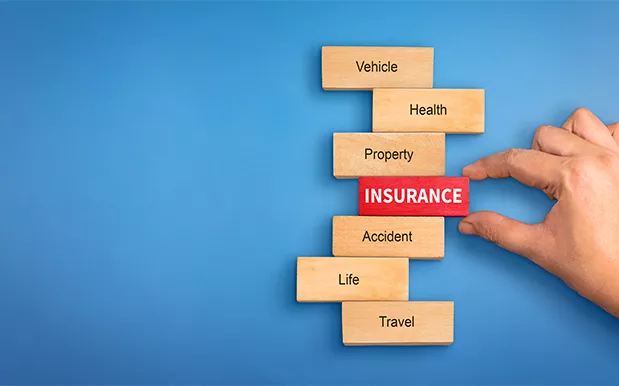In the complex world of insurance, no fault insurance is a concept that has been designed to simplify and streamline the claims process in certain situations. It is particularly prevalent in the areas of auto and workers’ compensation insurance. The fundamental principle behind no fault insurance is to provide a mechanism for individuals to receive compensation for losses or injuries without the need to prove fault or negligence on the part of another party. This approach aims to reduce the time and expense associated with litigation and the often-contentious determination of who is at fault in an accident or incident. Understanding how no fault insurance works is crucial for consumers who want to make informed decisions about their insurance coverage and protect themselves from potential financial hardships.
No Fault Insurance in Auto Insurance
1. Coverage Basics
No fault auto insurance typically covers a range of expenses related to injuries sustained in a car accident. It includes medical expenses for the policyholder and any passengers in the insured vehicle. For example, if a driver and their passengers are injured in a collision, the no fault insurance will pay for doctor visits, hospital stays, surgeries, and any necessary rehabilitation. It also covers lost wages. If an injured person is unable to work due to their injuries, the insurance will provide compensation for the income they have lost during their recovery period. In addition, it may cover essential services like in-home nursing care or transportation to and from medical appointments. This means that regardless of who caused the accident, the policyholder’s own insurance company will step in to cover these costs up to the policy limits.
2. Policy Limits and Exclusions
Each no fault auto insurance policy has specific policy limits. These limits determine the maximum amount that the insurance company will pay for different types of claims. For medical expenses, there may be a limit of, say, $50,000 per person per accident. If the total medical costs exceed this limit, the policyholder may need to seek additional compensation through other means, such as a lawsuit against the at-fault driver if the situation allows. There are also exclusions. Cosmetic procedures that are not medically necessary are usually not covered. For example, if a person wants to have plastic surgery to correct a minor scar from the accident that does not affect their physical function, the no fault insurance will not pay for it. Pre-existing conditions are another area of exclusion. If a person had a back injury before the accident and claims that the accident made it worse, the insurance company may only cover the portion of the treatment that is directly related to the new injury caused by the accident.
3. Subrogation Rights
Even though no fault insurance pays out claims without determining fault, insurance companies have subrogation rights. This means that if the accident was actually caused by another driver, the insurance company that paid the claim can seek reimbursement from the at-fault driver’s insurance company. For example, if Driver A’s no fault insurance pays for the medical expenses of Driver A and their passengers after an accident with Driver B, Driver A’s insurance company will investigate the accident. If it is determined that Driver B was at fault, Driver A’s insurance company can then file a claim against Driver B’s insurance company to get back the money it paid out. However, this process does not affect the initial claim payment to the policyholder. The policyholder still receives compensation promptly without having to wait for the determination of fault.
No Fault Insurance in Workers’ Compensation
1. Injury and Illness Coverage
In the context of workers’ compensation, no fault insurance covers employees who are injured or become ill due to their work. It provides medical treatment for work-related injuries. For example, if a construction worker breaks a leg on a job site, the workers’ compensation insurance will pay for X-rays, setting the leg, and any follow-up appointments. It also covers lost wages during the recovery period. If the worker is unable to work for several weeks or months, they will receive a portion of their regular salary. In some cases, it may also cover vocational rehabilitation if the injury is severe enough that the worker needs to be retrained for a different job. For instance, if a factory worker loses a hand in an accident and can no longer perform their previous job duties, the insurance may pay for training to help them learn a new skill and find a different type of employment.
2. Benefit Calculation and Duration
The calculation of benefits in workers’ compensation no fault insurance is based on a percentage of the employee’s average weekly wage. The percentage may vary depending on the state or jurisdiction. For example, in some places, an injured worker may receive 66.67% of their average weekly wage as compensation for lost wages. The duration of the benefits also depends on the nature of the injury. For a temporary injury, like a sprained ankle that heals within a few weeks, the benefits will be paid for the time the worker is unable to work. For a more serious injury, such as a spinal cord injury that results in permanent disability, the worker may receive benefits for the rest of their life. However, there are often maximum and minimum benefit amounts set by law to ensure fairness and prevent abuse.
3. Dispute Resolution
Sometimes, there may be disputes between the employee and the employer or the insurance company regarding the workers’ compensation claim. For example, the employer may dispute the extent of the injury or the need for certain medical treatments. In such cases, there are established procedures for dispute resolution. This may include mediation, where a neutral third party helps the two sides reach an agreement. If mediation fails, there may be a hearing before a workers’ compensation judge. The judge will review the evidence presented by both sides and make a determination. This process is designed to be fair and efficient, ensuring that the employee’s rights are protected while also preventing unfounded claims from being paid.
Filing a Claim in No Fault Insurance
1. Reporting the Incident Promptly
In both auto and workers’ compensation no fault insurance, it is essential to report the incident promptly. In auto insurance, the policyholder should contact their insurance company as soon as possible after an accident. They will need to provide details such as the date, time, and location of the accident, the names and contact information of any other parties involved, and a description of what happened. For example, if a car accident occurs, the driver should call their insurance company from the scene if it is safe to do so or as soon as they are able. In workers’ compensation, the employee should report the injury or illness to their employer immediately. The employer will then notify the insurance company. Delaying the report can lead to complications and may even result in the denial of the claim.
2. Submitting Documentation
After reporting the incident, the claimant will need to submit documentation to support the claim. In auto insurance, this includes medical bills, receipts for any out-of-pocket expenses related to the accident, and proof of lost wages if applicable. For example, if a person had to pay for a wheelchair rental while recovering from an accident, they would need to provide the receipt. In workers’ compensation, the employee will need to provide medical records from the treating doctor, including diagnoses, treatment plans, and any test results. They may also need to provide documentation of their pre-injury wage, such as pay stubs or tax returns, to calculate the lost wage benefits accurately.
3. Claim Evaluation and Payment
The insurance company will then evaluate the claim. In auto insurance, they will review the documentation to ensure that the expenses are covered under the policy and that the claim is legitimate. They may also investigate the accident further if there are any questions about the circumstances. For example, if the accident report seems inconsistent, they may interview witnesses. In workers’ compensation, the insurance company will assess the medical records and the employer’s report. If the claim is approved, the insurance company will make the payment according to the policy terms. In auto insurance, the payment may be made directly to the medical providers or to the policyholder for reimbursable expenses. In workers’ compensation, the lost wage benefits may be paid weekly or bi-weekly, and the medical expenses will be paid directly to the healthcare providers.
Advantages and Disadvantages of No Fault Insurance
1. Advantages
One of the main advantages of no fault insurance is the speed of claim settlement. Since fault does not need to be determined initially, claimants can receive compensation more quickly. For example, in an auto accident, the injured parties can start getting their medical bills paid and receive lost wage benefits without waiting for a long and often-delayed investigation into who caused the accident. It also reduces the burden on the legal system. Fewer lawsuits are filed because the focus is on compensating the injured rather than assigning blame. This can lead to lower legal costs for both the insurance companies and the claimants. In workers’ compensation, it ensures that employees are taken care of promptly, which can help them recover more quickly and return to work or adjust to a new work situation if necessary.
2. Disadvantages
However, no fault insurance also has some disadvantages. The coverage limits can be a problem. If the injuries are severe and the medical expenses exceed the policy limit, the claimant may face financial difficulties. For example, in a serious auto accident with multiple injuries, the $50,000 medical expense limit may not be enough to cover all the necessary treatments. In workers’ compensation, the benefit amounts may not fully replace the employee’s lost income, especially for high-earning employees. Another disadvantage is that some people may feel that it is unfair not to hold the at-fault party accountable. In auto insurance, if a reckless driver causes an accident and their insurance company does not have to pay out a large claim because of no fault insurance, they may not face the full consequences of their actions.
Conclusion
No fault insurance, whether in the context of auto or workers’ compensation, operates on the principle of providing compensation without the immediate need to prove fault. It covers a range of expenses such as medical costs, lost wages, and in some cases, rehabilitation. Policy limits, exclusions, and subrogation rights are important aspects of auto no fault insurance, while benefit calculation, duration, and dispute resolution are key in workers’ compensation no fault insurance. Filing a claim requires prompt reporting and submission of documentation, followed by claim evaluation and payment. While it has advantages like faster claim settlement and reduced legal burden, it also has disadvantages such as coverage limits and a perception of unfairness. Understanding how no fault insurance works is essential for individuals to make informed decisions about their insurance coverage and protect themselves from potential financial losses.
Related topics:

































